Variant of E. atrorubens: 'bicolor'
Red or purple or red/brown/purple sepals and in part yellow petals
can also sometimes have light/white forms of epichile and bosses
(previously known locally or called by me 'Lemon-petalled' or 'Lem-pets' for short, also known to have the regular purple stem or a light green stem as per photo examples shown below)
(Bryan Yorke -27th June 2019)
I first became aware of a undefined form of varietal Epipactis atrorubens present on Hutton Roof in Cumbria, back in 2014 In the following years they had started to make a impact on my orchid studies at Hutton Roof.
For ease of recording them, and to easily qualify recognition at that time, I started to call them “Lemon-Petalled” or Lem-pet for short, this was only ever meant to be a working name which it has served it's purpose. As times progressed I have found more of them, and now in 2020 I reckon we do have more than 30 present just within my study area. Thats a growth of at least 28 plants over six years.
I have now decided that it would be far more practical to give these varietal forms that more true defined name of 'bicolor' (rather than Lem-pet), and this will distinguish a difference from a classic atrorubens. After discussions, the name 'bicolor' seems very appropriate to represent the situation we have at Hutton Roof and possibly some other areas both local and regional. A full nomenclature document has now been published in the BSBI News 143 pages 29 and 30 (see bottom of this page to see paper) which is in support of this new varietal name of 'bicolor'. Below is a photograph of a 'bicolor' plant, our Specimen 66 which is a 'bicolor' form on yet another peculiarity by showing on a light green stem, together with a further definition of a 'bicolor' plant Specimen 40 which is shown on a purple stem. The photo shows them side by side.
This is not a phenomenom contained within one particular pavement on Hutton Roof but seen on several of it's pavements.
Even 'bicolor' will have its own variants and here are some I have already recognised eg:
1) Bicolor on a green stem
2) Bicolor on a purple stem
3) Bicolor with a cream/white epichile and bosses
4) Bicolor with a red or pink epichile and bosses
5) Bicolor with strong purple sepals
6) Bicolor with a lighter purple sepals
7) Bicolor with rustic brown sepals
This photo shows you the "bicolor" in both green stem and purple stem side by side
For ease of recording them, and to easily qualify recognition at that time, I started to call them “Lemon-Petalled” or Lem-pet for short, this was only ever meant to be a working name which it has served it's purpose. As times progressed I have found more of them, and now in 2020 I reckon we do have more than 30 present just within my study area. Thats a growth of at least 28 plants over six years.
I have now decided that it would be far more practical to give these varietal forms that more true defined name of 'bicolor' (rather than Lem-pet), and this will distinguish a difference from a classic atrorubens. After discussions, the name 'bicolor' seems very appropriate to represent the situation we have at Hutton Roof and possibly some other areas both local and regional. A full nomenclature document has now been published in the BSBI News 143 pages 29 and 30 (see bottom of this page to see paper) which is in support of this new varietal name of 'bicolor'. Below is a photograph of a 'bicolor' plant, our Specimen 66 which is a 'bicolor' form on yet another peculiarity by showing on a light green stem, together with a further definition of a 'bicolor' plant Specimen 40 which is shown on a purple stem. The photo shows them side by side.
This is not a phenomenom contained within one particular pavement on Hutton Roof but seen on several of it's pavements.
Even 'bicolor' will have its own variants and here are some I have already recognised eg:
1) Bicolor on a green stem
2) Bicolor on a purple stem
3) Bicolor with a cream/white epichile and bosses
4) Bicolor with a red or pink epichile and bosses
5) Bicolor with strong purple sepals
6) Bicolor with a lighter purple sepals
7) Bicolor with rustic brown sepals
This photo shows you the "bicolor" in both green stem and purple stem side by side
Specimen 66 (Bicolor) - Shown here on a " Light Green" stem
whilst the stem is of light green which is rare in itself, together with the epichile and boss which have a base cream colour
which together is a even more rare combination to the
already complex scenario.
whilst the stem is of light green which is rare in itself, together with the epichile and boss which have a base cream colour
which together is a even more rare combination to the
already complex scenario.
 |
| (Spec 66) of the beautiful E. Atrorubens var: 'Bicolor' on a green stem (Click over to enlarge) |
(Spec 66) of the beautiful E. Atrorubens var: 'Bicolor' on a green stem (Click over to enlarge)
(below) Specimen 40 (bicolor) - but this time showing on a atrorubens classic" Light Purple" stem.
with the epichile and boss showing a light lilac
with the epichile and boss showing a light lilac
********************************************
Below are listed our principal E. atrorubens var 'bicolor' specimens and their known histories:
Specimen 17v (Bicolor)
Spec 17v Epipactis atrorubens var: bicolor (Dark Red Helleborine)
Click over to enlarge Photo: 8th July 2019 - Hutton Roof
2021 Caged and came through successfully
Spec 17v Epipactis atrorubens var: bicolor (Dark Red Helleborine)
Click over to enlarge Photo: 8th July 2019 - Hutton Roof
2021 Caged and came through successfully
2022-Caged early and came through successfully again. A number of the plants in the 17's area fell victim to deer predation this year, so the value of the cages is evident, allowing this cracking specimen to reach inflorescence, as you can see from the following three photographs.
2024 - Came through well
------
Specimen 33 -(Bicolor)
33 on 26th June 2020
 |
| Specimen 33 on 24th June 2017 (Click over to enlarge) |
This is a very strong specimen at the base of a small hazel bush. All around it are similar nice specimens which some look like they could be related directly to 33 by their colour and make-up and subsequently I have already used presumption and thereby numbered them as Specimen 33a,b and c etc. It is clear that the specimen does have the obvious 'bicolor' qualification as you will already note from the photos and also of additional interest is that the Epichile and bosses on this specimen are very light has you can see in some cases it has been recorded down to almost white. Also the epichile shows a light rose red and apple green staining.
(July 2019) Caged and fully matured OK.
(July 2020) fully matured OK.
(July 2021) fully matured OK.
2022- Remained caged and came through well. 33a and b were caged but were trampled (red poll cattle) early on. 33c reached inflorescence along with 33.
33
33
33c
2023(above)
33 came through with a twin, but both were victims of severe dehydration.
2024:A non-flowering year
40,40a (bicolor)
 |
| One (Spec 40) of the beautiful bicolor on a purple stem. (Click over image to enlarge) |
This shows the most beautiful 40s on 5th July 2017 (Click over to enlarge)
but sadly the following photo is how they were when checked out on the following day
6th July 2017
Here we have Specimen 40s on the 6th July just after they had been taken down yet again with Brown Hare suspect. (Click over to enlarge)
(below) 2018 (premature dieback)
This is a photo from 2018 when we had a heatwave situation which
had drought conditions and this presented a
had drought conditions and this presented a
major problem for the 40s duo along with many other specimens,
causing a premature dieback situation as shown
causing a premature dieback situation as shown
here.
Histories for Specimen 40 (below):
2014 Update
First found as a single specimen.
2015 Update
Bicolor and stunning 19 1/2" height, purple washed stem, small tucked basal at 1" approx, then second basal at 2 1/2" up the stem. Good spike with 33 flowers.
2016 Update
Shows 3 years stems, and this year came through in tandem, got to full growth then all spike section predated.
2017 Update
Both tandem duo doing fine on 5th July 2017, yet predated the day after 6th July 2017, must cage for 2018.
2018 Update
Sadly, although these pair of beauties were doing fine at first, they where soon struck down with severe dehydration because of the heatwave experienced. Like so many other plants they suffered die-back which in the photo above shows them having not changed growth status in over 2 weeks. The specimens had been caged for their protection.
2019 Update
The plants did eventually come through but much stunted in growth and so far just showing the base leaves with no signs of floret so not sure if they will make it this year. Again damage caused through last years draught situation (28th June 2019). No further progress at 18th July 2019 now considered aborted
2020 Update All OK on two previous inspections 9th and 15th June 2020. 40b has now been predated by Brown Hare - actually through a protection cage!! lost its inflorescence in last 48 hours (26th June 2020) 40a still OK. Within days 40a was also took down, so both now missing inflorescence.
2021 Update All OK and both checked out 30th June, looking sad because of the shortage of water, whether they will make it or not. Here is current photo taken (30th June 2021). All came through in full flower (July 2021)
2022 Update
This pair were caged and came through well in 2022. The photographs really show the lovely colouring on each plant, particularly the epichile.
2022
2022
2022
2022
2023: No show
2024
One plant aborted and the other was much reduced in size
****************
Specimen 40b
Specimen 40b (bicolor) is a special plant and grows at about one metre from the established specimens 40 and 40a (duo). It will normally only grow to around the 10" height and will bear around 15 flowers.
The very first to flower in any given year, it's always about 7 days previous to any other early specimens.
It's a light looking inflorescence on a purple stem, showing some bicolor influence with the part yellow petals together with a special white/cream and apple green stained epichile whilst retaining classic light red bosses. The only other example of the epichile showing a apple green midrib can be found on the 33 population which lies at approx 100 yards to it's S/South west
No.40b Atrorubens bicolor
Photo: Hutton Roof on 18th June 2018
again the earliest flowering atrorubens
No.40b Atrorubens bicolor
Photo: Hutton Roof on 18th June 2018
again the earliest flowering atrorubens
No.40b Atrorubens bicolor - a light flowering plant with a white epichile with that apple green, always 7-10 days earlier than others
Photo: Hutton Roof on 15th June 2020.
No.40b a light flowering plant, always 7-10 days earlier than others
Photo: Hutton Roof on 15th June 2020.
Above: Specimen 40b (bicolor) is the very first to flower as usual, it's always about 7 days previous to other early specimens. It's a light looking inflorescence showing some bicolor influence with the part yellow petals together with a white/cream and apple green stained epichile whilst retaining a classic light red bosses.
40b Atrorubens (bicolor)
Photo: Hutton Roof - 17th June 2020
40b Atrorubens (bicolor)
Photo: Hutton Roof - 17th June 2020
40b Atrorubens (bicolor)
Photo: Hutton Roof - 17th June 2020
40b Atrorubens (bicolor)
Photo: Hutton Roof - 17th June 2020
40b Atrorubens (bicolor)
Photo: Hutton Roof - 17th June 2020
40b Atrorubens (bicolor)
Photo: Hutton Roof - 17th June 2020
40b Atrorubens (bicolor)
Photo: Hutton Roof - 17th June 2020
40b Atrorubens (bicolor)
Photo: Hutton Roof - 17th June 2020
40b has come through again for 2021, although this year it certainly was not the first to flower, but very soon afterwards. I am reporting this on 30th June and here is a current photo of the beauty (below)
30th June 2021
2022 update- 40b was caged, but browsed early on nevertheless.
2023: No show
2024
Blind/non-flowering
Epipactis atrorubens var bicolor Click over to enlarge
Photo: Hutton Roof 11th July 2015
5th July 2020
2015 Update: Found this year on 27th July 2015 at 14" height
2016 Update: Came through again in full flower by 1st July and now at 18" height with 21 flowers. The specimen is always one of the first to flower.
5th July 2020
Histories for Specimen 55 (below):
2015 Update: Found this year on 27th July 2015 at 14" height
2016 Update: Came through again in full flower by 1st July and now at 18" height with 21 flowers. The specimen is always one of the first to flower.
2017 Update: Came through OK and reached its full potential at 20" height with 40 flowers, then soon after I found it had been trampled or alternatively something had got to the root-stock and the plant had keeled over.
2018 Update: The plant came through with stunted growth and never got chance to straighten up before 'die-back' set in because of draught weather situation.
2018 Update: The plant came through with stunted growth and never got chance to straighten up before 'die-back' set in because of draught weather situation.
2019 Update: Sadly the specimen has not come through this year, thought that the problem is a result of the last years heatwave and its stunted growth.
2020 Update: Thankfully 55 has returned and grown to a good height around the 28" with inflorescence in tact on 12th July.
2020 Update: Thankfully 55 has returned and grown to a good height around the 28" with inflorescence in tact on 12th July.
2021 Update: Sadly 55 never came through, although there are plenty in the surrounding areas which could so easily be from this specimen
2022 Update: Caged and came through well.
2022
2022
2023: Suffered from dehydration, but managed a few flowers.
55a is a very special bicolor specimen - photo: early July 2020
2022 update: Came through well
2022
2023
Came through well
2024
2025
55c
Another 55 which is so special

55c atrorubens - bicolor - 26th June 2020
55c atrorubens - bicolor - 26th June 2020
55c atrorubens - bicolor - 26th June 2020
Another 55 which is so special

55c atrorubens - bicolor - 26th June 2020
55c atrorubens - bicolor - 26th June 2020
55c atrorubens - bicolor - 26th June 2020
2021 Update - Specimen 55c came through well again throughout (caged)
2022- This beautiful specimen was caged again this year and came through wonderfully. Very distinctive with the 'bellsweep' petals.
2022
2022
2022
2022
2023
This favourite bicolour came through well, when so many were lost due to the weather.
2025- a non flowering year
Specimen 55K (Bicolor)
2021 Update: 55k duo came through OK
2022 Update: Only the one plant reached inflorescence this year
2022
2022
2023
Specimen 55L - bicolor (2019)
The beautiful small 55L which was only found in 2019 is tucked away and almost direct in West alignment to Specimen 55. It is a bicolor variant together with light epichile and boss features as can be seen from the following photograph.
2020 update: The plant only came through as seedling without any inflorescence.
2020 update: The plant only came through as seedling without any inflorescence.
Epipactis atrorubens var: bicolor Specimen 55L (Click over to enlarge)
Photo: 17th July 2019 - Hutton Roof
This photo shows the light coloured epichile and boss features
Epipactis atrorubens var: bicolor Specimen 55L (Click over to enlarge)
Photo: 17th July 2019 - Hutton Roof
This photo shows the full plant
Epipactis atrorubens var: bicolor Specimen 55L (Click over to enlarge)
Photo: 17th July 2019 - Hutton Roof
This photo shows the plant in relation to a near hazel which also
has a couple of 'bicolor' at its base etc
Update: 2021 55L came through OK.
has a couple of 'bicolor' at its base etc
Update: 2021 55L came through OK.
2022: Did not come through.
2023: Did not reach inflorescence.
Specimen 66 (Bicolor) - Shown here on a " Light Green" stem
whilst the epichile and boss have a base cream colour
which together is a even more rare combination to the
already complex scenario
whilst the epichile and boss have a base cream colour
which together is a even more rare combination to the
already complex scenario
 |
(Spec 66) of the beautiful E. Atrorubens var: 'Bicolor' on a green stem (Click over to enlarge) |
on a green stem (Click over to enlarge)
2019 Update - (above) Specimen 66 - Came through all OK and reached maturity etc
2020 update - Came through all OK and reached maturity.
2021 update - Came through all OK and reached maturity, looking even better
2022 update- This special plant remained protected in the 'heavy duty' cage and reached maturity
2022
2022
2022
2022
2023
Came through again
2024
Specimen 74 (Bicolor)
Specimen 74 Epipactis atrorubens 'bicolor' (click over to enlarge)
Photo showing late shoots this year
Photo taken 15th June 2019 Hutton Roof
 |
| Specimen 74 LP on Purple variant found 22nd July 2016 and was the last of the year Click over photo to enlarge |
Of note with some of the 'Bicolor' plants that in some of the cases (less than 20%) the Epichile and bosses are quite light coloured in appearance showing cream or even white, but in general, they are of all shades "pink".
(14th August 2017) I have decided to do some home study on Specimen 74 (lemon-petalled). I did go and check it out in the field only yesterday and the ovaries are very slow at swelling on this specimen, but what stood out a mile was the lower leaf structure which did have very dishy basal leaves which straightaway gives me the impression of "helleborine introgression. Is it possible that this may be a hybrid ?
 |
| Specimen 74 Good indication of the "Helleborine" type leaves (Click over to enlarge) |
 |
| Specimen 74 Helleborine leaves - captured on photo 13th August 2017 |
 |
| Specimen 74 (Bicolor) taken July 2017 |
 |
| Specimen 74 (Bicolor) Protected by cage since July 2017 |
Specimen 74 has every right to be a member of the "hybrid probables" when you stop to think about it because it is immediately surrounded by many E. Helleborines, Hybrids and also E. Atrorubens. The nearest E. Helleborines are within six foot (6 plants) and there are a further ten E. Helleborines within a radius of 20 yards of the plant. Also there are several scattered E. Atrorubens also within that same radius of 20 yards. But probably even more interesting Specimen 15,15a,15c,15d (some of the more profound hybrids) lie in a direct line of about 7 yards from the plant. The nearest other lempets are 40 and 40a which do lie within 25 yards of the plant and Escarp 13 another lempet which lies about 50 yards Since July 2017 the plant has been protected with a cage and reached maturity without problem.
2018 Update -
Specimen 74 Sadly the plant suffered premature dieback on account of dehydration because of the heatwave. It rearch to the point where the inflorescence was bent over before dying back.
2019 - July Update -
Specimen 74 The plant was slow this year and probably on account of last years heatwave of which again this plant suffered with premature dieback. This year it has come through with a partner and they are very stunted to about 50% of the norm, and thats the way they remained, but did mature to flowering
2020 - Update
Specimen 74 now twinned did come through but late, but soon fell victim to browsing off inflorescence at early stages.
2020 - Update
Specimen 74 now twinned did come through but late, but soon fell victim to browsing off inflorescence at early stages.
2021 - Update
Specimen 74 did come through but very stunted
2022- Update
Specimen 74 did not come through unfortunately
2023- Update
Came through but became a victim of 'the burn'
2024- Did not reach inflorescence
2025- no show
*******
Escarp 13 (Bicolor)
(above) This shows the plant Escarp 13 on 9th July 2021
 | ||
| Escarp No.13 - A strong bold specimen of Bicolor (Click over to enlarge) Photo: 2017
|
Epipactis atrorubens bicolor - 'bicolor' Spec Escarp 13
Photo: 17th July 2019 - Hutton Roof
Epipactis atrorubens bicolor 'bicolor' Spec Esc 13
Photo: 17th July 2019 - Hutton Roof
Epipactis atrorubens bicolor 'bicolor' Spec Esc 13
Photo: 17th July 2019 - Hutton Roof
Been waiting for this one which is Specimen Escarp 13 and it is a specimen with much vigour. I have watched this plant for several years, sadly last year (2018) he suffered premature dieback on account of the heatwave weather, and this year came through late and stunted, but thankfully he has made up for lost time with plenty of vigour and now stands at near the metre mark.
Epipactis atrorubens bicolor Spec Escarp 13
Photo: 17th July 2019 - Hutton Roof
Escarp 13 - bicolor - long established and thought may even be a hybrid
Photo: 3rd July 2021
Escarp 13 - bicolor - long established and thought may even be a hybrid
Photo: 3rd July 2021
Escarp 13 - bicolor - long established and thought may even be a hybrid
Photo: 3rd July 2021
Escarp 13 - bicolor - long established and thought may even be a (possible hybrid)
Photo 3rd July 2021
(Updated 2017) There are three 'Bicolor' specimens along the length of "Escarp" and the above one which is for now named "Escarp 13" is without doubt the strongest/boldest specimen out of the three with a excellent thick atrorubens "purple" stem. It came through well in 2017 as you can see in the above photograph but sadly towards the end fell victim to the Roe Deer and was subsequently liberated of its magnificent plume (or spike). The leaves were also striking with their keeled broad at the base and out stretching features (rather than upright).
Within a couple of metres of this plant are two strong suspected hybrids which for now have been called - Escarp 7 and Escarp 10 which have the "regular" two tone colourization in the flowers, yet bear many Helleborine features especially in their leaves, but these show no lemon-petalled in their make up.
2020 update came through late, but attacked early at the rootstock by possibly voles, and later further problems with inflorescence bitten off.
2020 update came through late, but attacked early at the rootstock by possibly voles, and later further problems with inflorescence bitten off.
2021 update came through very strong - kept caged
2022 update- caged and came through, with a smaller twin.
2022-with an invader lurking
2023
Came through again, undoubtedly one of the best specimens this year. Came through solo.
42
Here is another sub-variety which I call WHEAT, we do have about 3 along the study area all slight variation. Please note with this Specimen (Wheat 1) or from area 42, that the yellow although well established on the petals, also shows up on the edges of some of the sepals as well.
2022- update- this 'wheat' specimen was found by Bryan last year, but was taken down early on. He was determined to get this one caged early this year, so it was a priority for me. Came through well as a duo, and both fit snugly into their cage. Beautiful yellow and pink colouring mix.
2022
2022
2022
2022
2023
42 and 42a came through well and with little dark colouring this year. The outer sepals much paler. Clear reduction in anthocyanin levels compared to last year.
Fascinating morphology and some hints of hybridization.
Two flowering plants this year
Some new bicolours from 2022 on. Just a few examples of these plants which seem to increase every year in this area.
In the 60s area
A new plant in the 15s area
A new bicolour near the top of the site
2023
good examples
***********













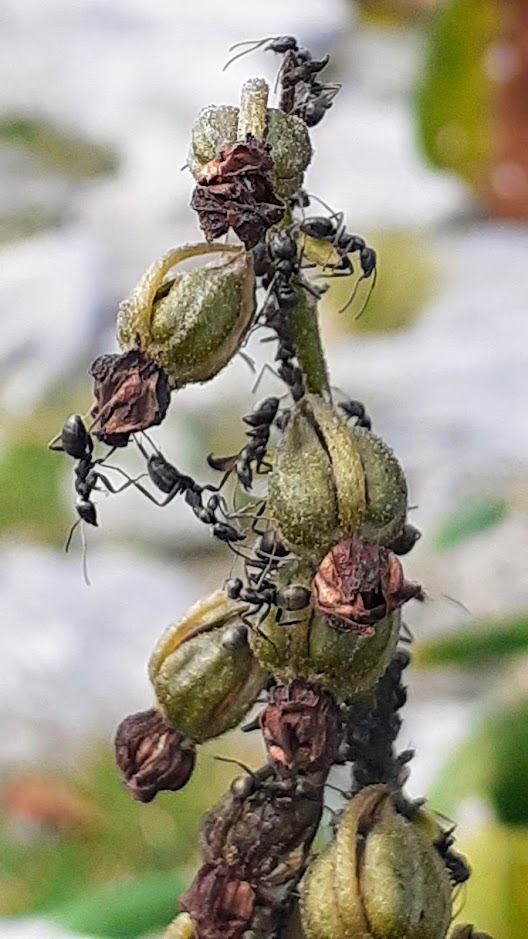


















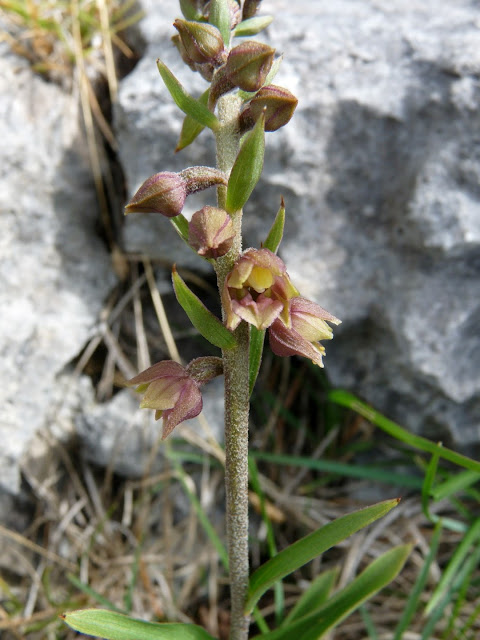












































































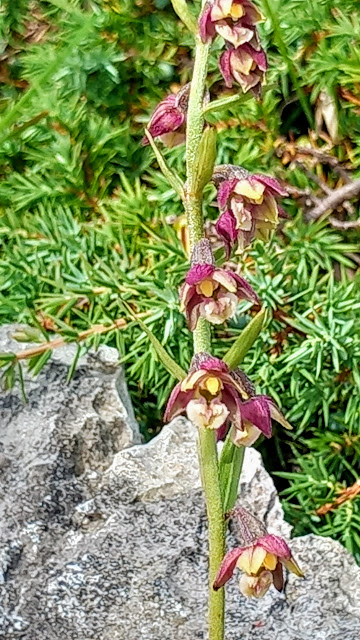
.jpg)









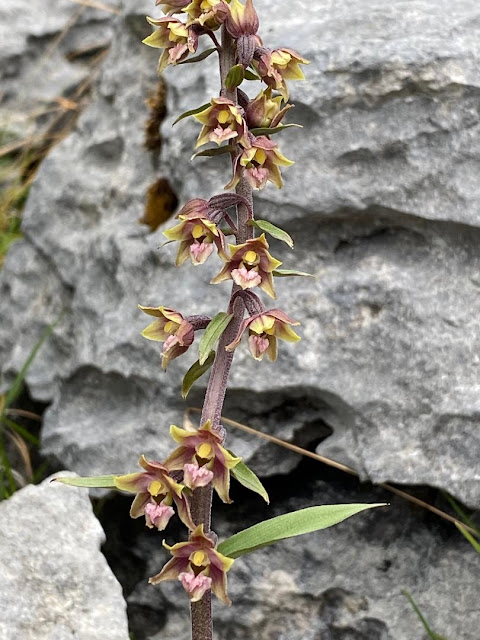
























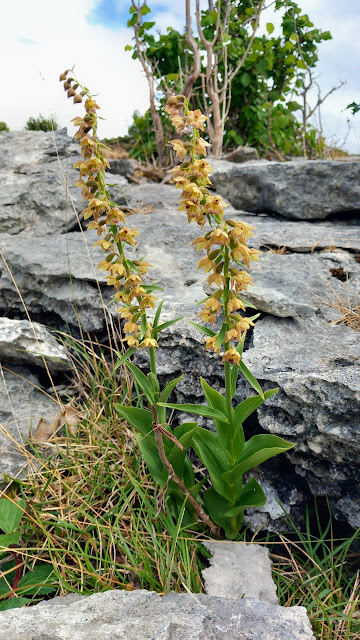





































.jpg)




